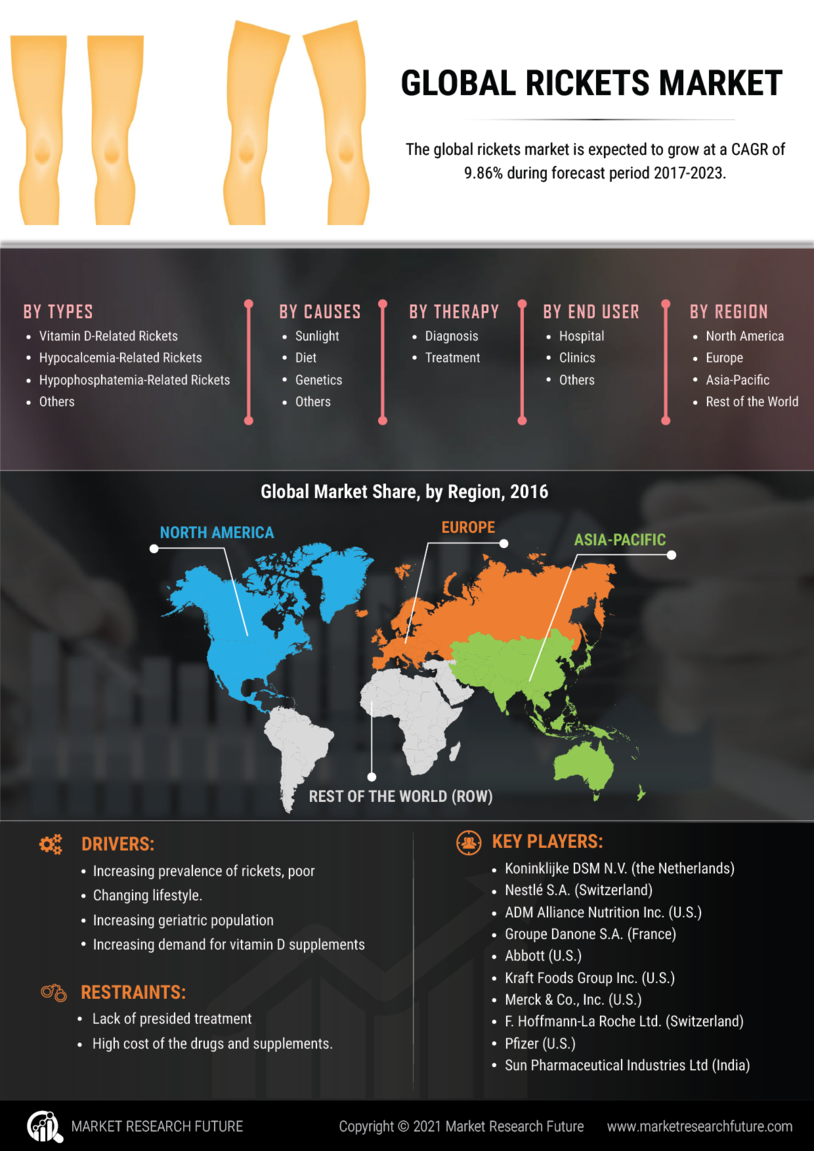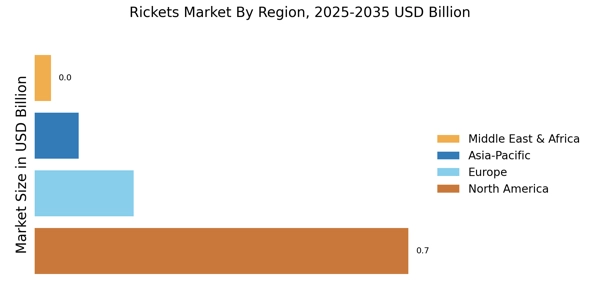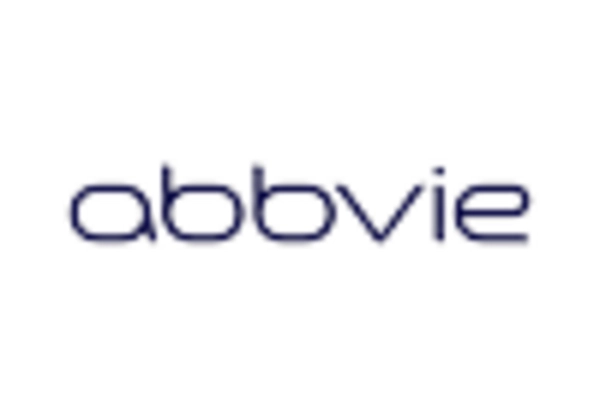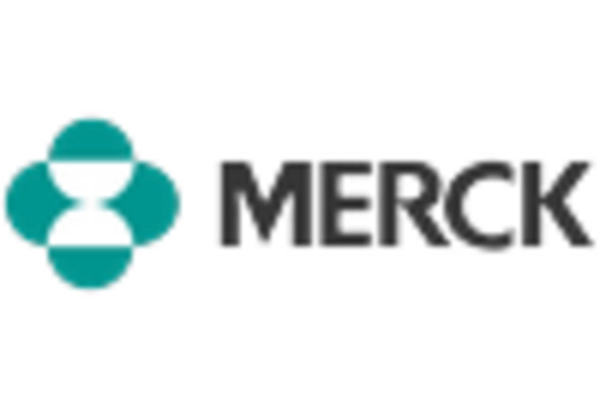Nutritional Deficiencies
Nutritional deficiencies, particularly in vitamin D, calcium, and phosphate, are critical drivers of the Rickets Market. Many populations, especially in urban areas, face challenges in obtaining adequate nutrition, which can lead to an increase in rickets cases. The demand for dietary supplements and fortified foods is expected to rise as healthcare professionals emphasize the importance of proper nutrition in preventing rickets. According to health reports, regions with limited access to sunlight and poor dietary habits are experiencing higher rates of rickets, thus creating a market opportunity for companies specializing in nutritional products. This trend suggests a potential for growth in the Rickets Market as awareness of nutritional health continues to expand.
Rising Incidence of Rickets
The increasing prevalence of rickets, particularly in children, is a notable driver in the Rickets Market. Recent studies indicate that rickets cases have surged due to factors such as dietary deficiencies and limited sunlight exposure. This rise in incidence has prompted healthcare providers to focus on early diagnosis and treatment, thereby expanding the market for rickets-related products. The World Health Organization has reported that vitamin D deficiency is a significant contributor to rickets, leading to a heightened demand for supplements and fortified foods. As awareness grows, the Rickets Market is likely to see a corresponding increase in the development of targeted therapies and nutritional interventions.
Advancements in Medical Research
Advancements in medical research are significantly influencing the Rickets Market. Ongoing studies into the genetic and environmental factors contributing to rickets are leading to innovative treatment options. Research institutions are exploring new therapeutic approaches, including gene therapy and advanced supplementation techniques, which could revolutionize the management of rickets. The potential for personalized medicine in treating rickets is becoming more apparent, as researchers identify specific genetic markers associated with the disease. This progress not only enhances treatment efficacy but also drives investment in the Rickets Market, as pharmaceutical companies seek to develop novel therapies that address the underlying causes of rickets.
Government Initiatives and Policies
Government initiatives and policies aimed at combating rickets are playing a pivotal role in shaping the Rickets Market. Various health organizations are implementing programs to promote vitamin D supplementation and public health campaigns to raise awareness about rickets. These initiatives often include guidelines for healthcare providers and educational resources for parents, which can lead to increased screening and early intervention. As governments recognize the long-term health implications of untreated rickets, funding for research and public health initiatives is likely to increase. This proactive approach not only addresses the immediate health concerns but also fosters growth in the Rickets Market by creating a supportive environment for product development and distribution.
Growing Demand for Preventive Healthcare
The growing demand for preventive healthcare is emerging as a significant driver in the Rickets Market. As individuals become more health-conscious, there is an increasing focus on preventing diseases rather than merely treating them. This shift in mindset is leading to a heightened interest in nutritional supplements and preventive measures against rickets. Health professionals are advocating for routine screenings and educational programs to inform families about the importance of vitamin D and calcium intake. The rise in preventive healthcare initiatives is likely to stimulate market growth, as consumers seek products that support bone health and overall well-being. Consequently, the Rickets Market is poised to benefit from this trend as it aligns with broader health objectives.


















Leave a Comment